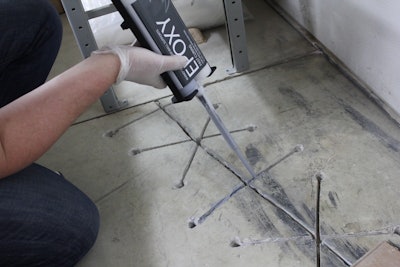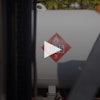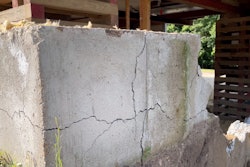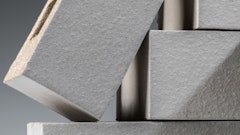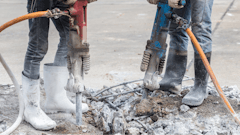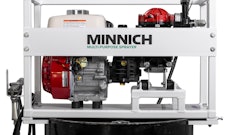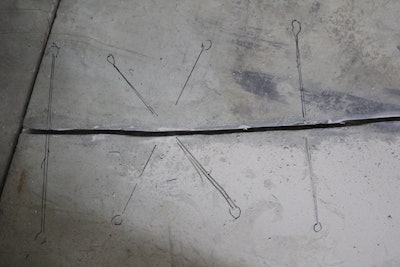
There are many factors that lead to concrete cracks and foundation cracks. Homeowners may only be focused on the damage they can see, while it’s the contractors’ responsibility to go several steps further to ensure the repair is reinforced and done correctly the first time.
The most common mistakes in foundation and concrete repair happen at the get-go, when the problem itself isn’t analyzed as a whole. The three most common steps missed or overlooked in the repair process are:
- Proper diagnosis of the crack and understanding the cause of the failure
- Asking the homeowner the right questions
- Preparation for the repair
 Using a solution like Rhino® Carbon Fiber Concrete Crack Lock®, permanently locks both sides of the crack together and prevents any further movement. It also maximizes the tensile strength of the carbon fiber.Rhino Carbon Fiber
Using a solution like Rhino® Carbon Fiber Concrete Crack Lock®, permanently locks both sides of the crack together and prevents any further movement. It also maximizes the tensile strength of the carbon fiber.Rhino Carbon Fiber
How to Diagnosis the Crack
Oftentimes, cracks in foundation are only addressed with polyurethane or epoxy injections, and many contractors focus solely on filling the crack and stopping any leaks and water. What they’re not looking at is what caused the crack to form in the first place.
Cracks cannot be repaired permanently with just a polyurethane or epoxy injection, as a lot of the time the injection will eventually fail. A common problem for a crack that’s been injected is not that the epoxy tends to fail in the injection, it fails where it bonds to the concrete itself. As the epoxy is significantly stronger than the concrete, the epoxy itself isn’t going to fail, it is the area where the injection bonds to the concrete that will give up. The bond of the epoxy will eventually break as poured walls move and shift.
Most repair methods don’t address the weak zone, the area outside of the main crack that is sometimes invisible to the eye. If analyzed closely, small hairline fractures often appear to spiral off the main crack – this is considered the weak zone, as these tiny cracks are difficult to inject because they are hard to see. If the weak zone is not addressed, the polyurethane or epoxy will cause the crack to further open and fail.
Ignoring the weak zone, misdiagnosing a crack as just a small water intrusion and not addressing the fact that there may be movement in that wall are common mistakes when it comes to foundation and concrete repair. To better address the problem the first time and avoid call-backs, the focus should not just be filling the crack but also structurally reinforcing the repair to ensure it doesn’t fail again.
Asking the Right Questions
When evaluating a repair job, contractors should ask the homeowners a number of questions, such as:
- How long have they seen that crack for?
- Have they seen that crack close up and then re-open depending on the season?
- Does this crack reappear at certain times of the year?
- Has there been exterior excavation or disruption to the foundation?
- Were there any modifications or changes that would change the stress load of the house, such as egress windows?
Then they can address the entire area of the crack with the right tools and solutions to help bond the concrete back and structurally reinforce the concrete so that the crack can’t reopen and start leaking again. Using a solution like Rhino Carbon Fiber Concrete Crack Lock, permanently locks both sides of the crack together and prevents any further movement. It also maximizes the tensile strength of the carbon fiber.
Another approach is to install Rhino carbon fiber fabric on top of the crack as it works as a secondary barrier against water intrusion and provides 6 inches of reinforcement on either side of the crack to address the weak zone. The Rhino Carbon Fiber Crack Lock, as well as the carbon fiber fabric, are ideal solutions to permanently stop any crack from reopening in a basement. It also works for cracks that have been previously injected and have failed. As cracks that have been previously injected are extremely difficult to re-inject, applying this crack repair fabric over top is permanent and fail-safe. 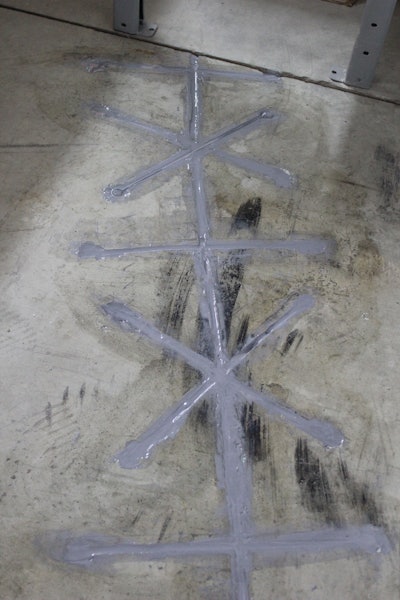 The Rhino Carbon Fiber Crack Lock, as well as the carbon fiber fabric, are ideal solutions to permanently stop any crack from reopening in a basement. It also works for cracks that have been previously injected and have failed.Rhino Carbon Fiber
The Rhino Carbon Fiber Crack Lock, as well as the carbon fiber fabric, are ideal solutions to permanently stop any crack from reopening in a basement. It also works for cracks that have been previously injected and have failed.Rhino Carbon Fiber
Contractors should also look for solutions that can be applied from the interior and exterior of the house.
With block walls it is important to understand the basement environment first, understanding the cause of the problem and how that foundation was built and waterproofed is critical to developing a solution. When it comes to block walls, bowing is the most common problem. Similar to cracks or damage in poured walls, it’s important to take a look at the whole picture. For example, looking at the soil type on the exterior of the foundation. The type of soil as well as expansion can cause small hairline cracks in the foundation. These hairline cracks often increase and cause severe inward pressure and movement to the point where the wall bows inward.
Another common problem in block walls are stair step cracks. It’s often repaired by just filling the crack with hydraulic cement, but to ensure it doesn’t fail again, contractors should look for a solution that goes one step further and strengthen the whole area with carbon fiber crack repair that will reinforce the stair step crack in all directions.
Consider a Carbon Fiber Repair
Some contractors make the common mistake of repairing concrete with more concrete. They will repair damaged concrete by only applying hydraulic cement over that area or only applying epoxy, but it’s important to stress the importance of using materials that are stronger than concrete like carbon fiber, which is the only true solution that will stop the concrete from re-breaking.
Given its strength, carbon fiber is being used more and more in residential construction and has long been used to repair and reinforce aging civil and commercial structures. While the construction industry is beginning to embrace the material, many are still unaware of how versatile carbon fiber really is.
The cost of carbon fiber has also decreased over the years, making it an overall cost-effective solution as prices are low and it offers a permanent solution to concrete cracks and foundation damage resulting in less call-backs, less time used for installation and repairs and long-term cost savings for the homeowners.
While there are common cracks and damage found in concrete and foundation not all problems can be resolved with the same solution repeatedly.
For contractors to get the repair right the first time, the best solution is to find one unique to the problem at hand, using the right tools and materials and focusing on not just the crack itself, but the overall environment where the damage is found.
